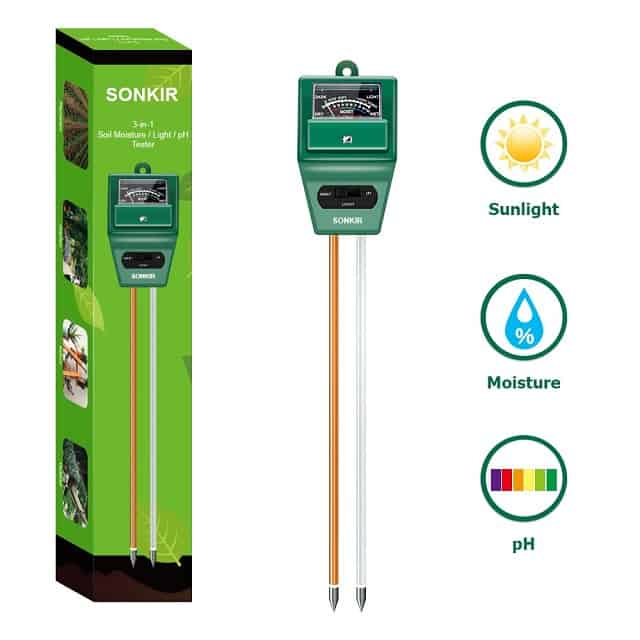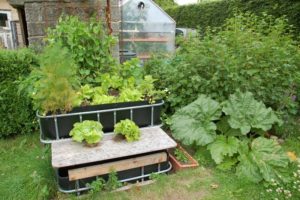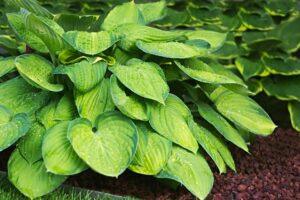Amaryllis is one of the best flowers to grow indoors for a burst of color during the cold winter months. This long-lasting flower is usually sold as a bulb, or it can be found already planted in a 5 to 6-inch pot.
Each Amaryllis bulb will produce 4 to 5 flowers that will bloom for 2 weeks in the early winter, and then the bulb can be planted again outdoors in the spring for a second bloom in the summer.
If you’re interested in learning how to grow Amaryllis continue reading this Amaryllis growing guide for more information.
Best Amaryllis Varieties
| Image | Name | Rating | Shop |
|---|---|---|---|
 | Amaryllis Flower Bulb with Stand | ||
 | Amaryllis Dancing Queen – Red & White Blooms |
Amaryllis Care
Sun: Full Sun, Part Sun
Height: 20-inches
Spread: 4 to 6 inches
Life Cycle: Annual/Perennial
Water Requirements: Moderate
Plant Outdoors: Spring
Plant Indoors: Late Fall
Amaryllis Annual or Perennial
Amaryllis is a perennial flower that is usually grown indoors and treated as an annual flower. This is due to the fact that they are a tropical flower that can only be grown outdoors as a perennial in USDA hardiness zones 8 to 10.
Amaryllis is not winter hardy and since they naturally flower in the late fall and early winter they need to be grown indoors in most areas except in the deep south.
Amaryllis Sun or Shade
Amaryllis plants need plenty of sunlight, and they grow best in a south-facing window the gets full sun. However, they can tolerate shade for a small portion of the day as long as they get at least 6 to 8-hours of direct sun.
Starting Amaryllis Indoors
You can start Amaryllis bulbs indoors in a 5 to 6-inch pot. They prefer to grow in loose well-draining potting soil mix with moderate fertility levels.
After the bulb is potted keep the soil moist, but don’t overwater the bulb or it could start to rot.
Then water the Amaryllis bulb lightly as it starts to sprout since excess water at this stage can encourage excess leaf growth at the expense of flower development.
Once the flower buds start to develop you can water more frequently, and if you want to increase the size of the flowers you can use a balanced 10-10-10 liquid fertilizer.
Starting Amaryllis in a Flower Bed
Amaryllis bulbs can be grown outdoors after their winter blooms die back. It’s important to wait until the weather warms up in your area since Amaryllis can not tolerate cold temperatures or frost.
In order to make it easy to care for an Amaryllis plant outdoors, it’s a good idea to sink them into the soil in their flower pots. This will make it easy to remove them from the garden once they fully die back in the fall.
Amaryllis will flower again when planted outdoors in 7 to 10 weeks, and they will start to turn yellow and die back once the temperature starts to drop in late summer or early fall.
Amaryllis Plant Spacing
Amaryllis bulbs should be planted 9 to 12-inches apart, and larger blooming varieties should be spaced 12 to 18-inches apart.
Amaryllis Soil Requirements

When grown outdoors Amaryllis can tolerate a wide range of soil conditions, but they prefer to grow in loose, well-draining rich soil that’s slightly acidic with a 6.0 to 6.5 pH.
Indoor Soil Note: Amaryllis plants grown indoors should be planted in a high-quality potting soil mix that drains well to avoid bulb rot.
Amaryllis Water Requirements
Amaryllis has moderate water requirements and it doesn’t like growing in waterlogged soil. In most cases, Amaryllis should only be watered when the top 2-inches of soil in their container starts to dry out.
Amaryllis will also require a dry rest period after flowering in order for the bulb to go through a dormancy period before it will sprout again.
Amaryllis Temperature Requirements
Amaryllis is a tropical plant that prefers to grow in a warm environment. However, Amaryllis bulbs will sprout in temperate climates once the soil temperature reaches 70°F (21° C).
Amaryllis Humidity Requirements
Amaryllis is native to Central and South America where it regularly experiences high humidity conditions. But it’s a very adaptable plant that can tolerate growing indoors in cold climates when the humidity starts to drop. However, it’s a good idea to keep an Amaryllis plant at 50% to 80% Relative Humidity.
Amaryllis Fertilizer Requirements
Amaryllis is a light feeder and it only needs to be fertilized with a half-strength general purpose fertilizer every two to three weeks once it starts to flower.
It’s also important to cease applying fertilizer once the Amaryllis bulb starts to die back so the bulb can enter dormancy.
Amaryllis Pests
Amaryllis is a hardy flower, but it can get infested with spider mites especially when it’s grown indoors.
You can use insecticides to control spider mites, or you can introduce spider mite predators if you prefer to use a more natural form of pest control.
Amaryllis Diseases
Amaryllis can be susceptible to a number of diseases including Red Blotch, Soft Bulb Rot, and Leaf Spot.
Red Blotch: Amaryllis leaves look scorched with moist sunken patches on the surface of the leaves. (Cause: Stagonospora curtisii)
Soft Bulb Rot: Amaryllis bulbs become soft and decay when the soil is too wet (Cause: Rhizopus stolonifer)
Leaf Spot: Amaryllis leaves start to form brown spots surrounded by dark brown or yellow rings (Cause: Cercospora amaryllidis )






